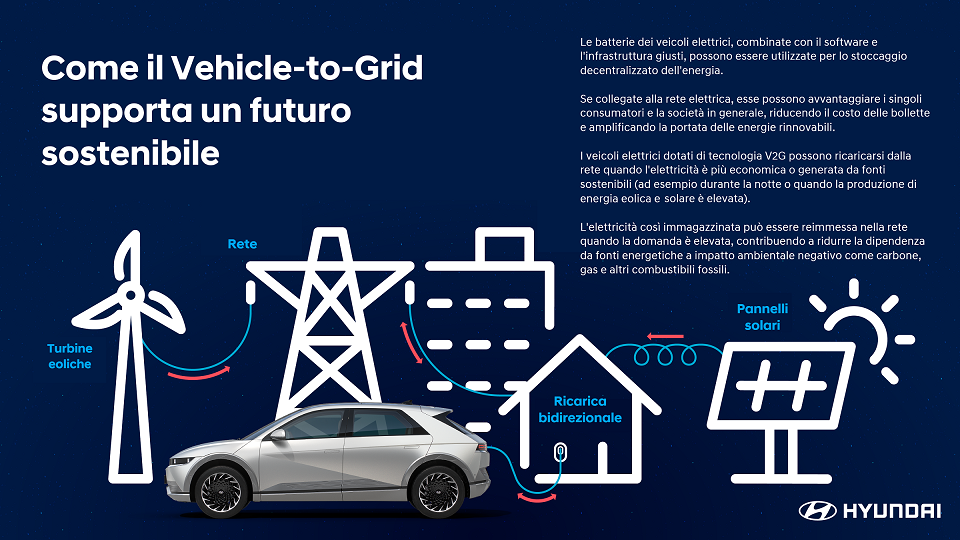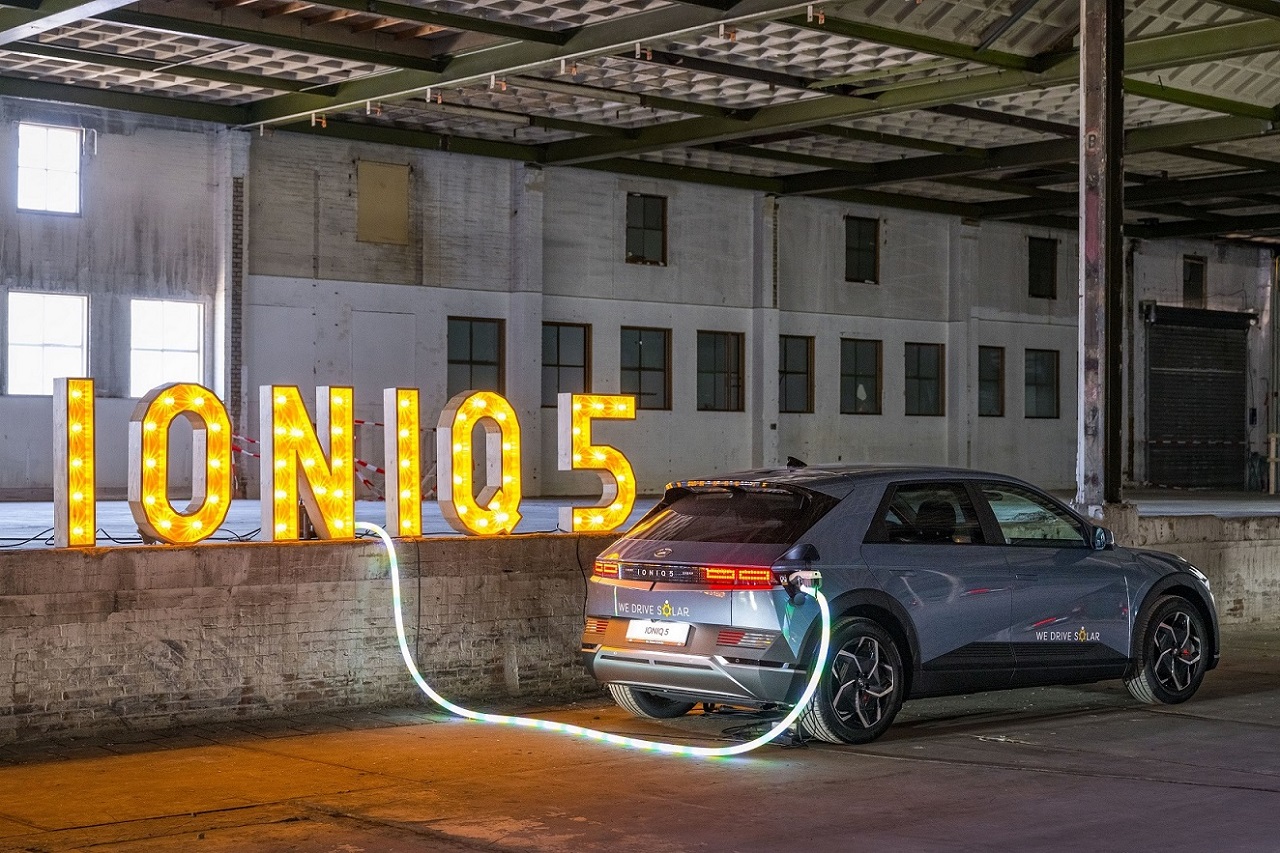Vehicle-to-Grid is an innovative technology, which offers a solution to support renewable sources and accompany the world in the transition towards the electric automotive and of this Hyundai she is strongly convinced of it.
Moreover, according to an analysis byEuropean Environment Agencyby 2050, 80% of cars in the European Union will be fully electric.
Vehicle-to-Grid technology could be the answer
V2G exploits the energy derived from renewable sources by storing it in the batteries of electric vehicles, and then re-injecting it into the electricity grid in times of peak demandthus benefiting not only electric car owners, but also society.
When do these peaks in demand occur? Tendentially in moments of greater use of energy, such as in daily activities or preparing a meal or when we relax in front of the TV.
It follows that in the future, when the demand for electricity grows to power our vehicles, governments will have to work on costs and decrease the level of use of fossil fuels to generate electricity which, although already declining (-39% in 2019 and -31% in 2021), is still not enough.
Finally, countries must be well equipped to be able to support the demand for electricity needed for cars and for daily activities in the near future.
It is clear that a technology capable of supporting these challenges is needed and V2G could be the right answer.
Hunday has decided to focus on Vehicle-to-Grid technology
V2G is a technology that could become the keystone of all EVs. Hunday herself is already making significant strides in this area.
How does V2G work specifically? It basically allows electricity grids to cope with the incremental load resulting from the recharging of millions of EVs. At the same time, however, it also arises as storage unit for renewable energythus making V2G-equipped vehicles usable as a backup when needed and once connected to the mains.
Very useful, therefore, to re-enter the stored energy when, for example, it is not possible to exploit solar energy because it is evening or wind energy due to lack of wind.
“V2G technology will give electric vehicles a secondary purpose outside of passenger transport. Their energy can be fed back into the grid for use by local utility companies, while their batteries can be used to store it, helping distributors stabilize the grid,” he said. Yukihiro Maeda, Head of Cross-Carline di Hyundai Motor Europe.
“In addition to managing the energy supply at peak times and contributing to the decarbonisation of the electricity system, this technology can also generate financial benefits for motorists and network distributors, while providing a significant benefit for the environment.”
To understand the potential of Vehicle-to-Grid technology, Hunday made a video in collaboration with the automotive journalist Nicki Shieldselectric vehicle expert.
The future of V2G is already among us
In some ways Vehicle-to-Grid is already here. In fact, dozens of countries are reorganizing the electricity grid and thinking of a common protocol for the communication of electric vehicles and the network to which they will then connect.
To understand the extent of the importance of electric energy re-feedback by EVs, just think that a single electric vehicle can store enough electric energy to power up to 5 homes for 24 hours. Think of the extent that this phenomenon could have if replicated for every inhabitant in all cities.

Hunday’s Vehicle-to-Grid projects in Germany and the Netherlands
Hunday, with its Progress for Humanity project, is ready to reach by 2035, in Europe, the carbon neutrality. For this reason, V2G technology is already being put into practice in the Old Continent thanks to two projects: one in the Netherlands and the other in Germania.
For example the Dutch city of Utrecht is ready to develop the first bidirectional region in the world. Hunday is in fact collaborating with the local mobility operator We Drive Solarproviding a fleet of units IONIQ 5 powered by V2G technology.
“We Drive Solar’s ambition is to achieve a large-scale application of V2G with a fleet of hundreds of IONIQ 5s shared bi-directionally in Utrecht and subsequently in other European cities,” commented Robin Berg, Director by We Drive Solar.
“To this end, we are building the largest two-way charging station factory in Europe and are working closely with Hyundai to enable the two-way ecosystem to scale up.”
As for Germany, Hunday has a partnership with Next power plantsintermediary between energy suppliers and the grid.
“Thanks to the pilot project in Germany, we were able to use the available facilities to test the technical feasibility of a future V2G service,” he said. Jens Kronen, Senior Open Innovation Manager at Hyundai CRADLEthe firm’s venture capital and open innovation division.
“The goal was to pre-qualify Hyundai’s EVs and provide secondary control energy (SRL). In this way, we have been able to use cars as a virtual power plant and participate in the energy market”.
















Leave a Reply
View Comments